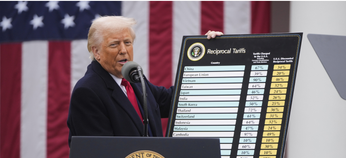
Economic resilience
Hello! This week we focus on the state of the Russian economy — data from the first half of the year suggests it is coping with sanctions and international isolation much better than anticipated. The decline in GDP has not, so far, come close to pessimistic predictions of up to 10%, real incomes have barely changed and unemployment is not increasing. However, many believe the economic slump is unlikely to reverse any time soon.

What’s happening?
The Economic Development Ministry and the State Statistics Service (Rosstat) last week published data that allows us to assess Russia’s economic performance so far this year.
- In June, GDP was down 4.9%, compared with 4.3% in May. For the second quarter, decline was estimated at 4% in annual terms (roughly half what we saw at the start of the pandemic in 2020), according to the Ministry of Economic Development. While these figures show that the recession is getting worse, the pessimistic predictions of a 10% annual GDP fall seem a long way off — such an outcome would require a real catastrophe in the latter part of the year. At present, this seems unlikely.
- Real disposable incomes fell 0.8% year on year in the second quarter. That’s an improvement on the first quarter (when they dropped 1.2%). And that’s despite double-digit annual inflation. The unscheduled indexation of pensions helped mitigate the impact of the recession on real incomes. And the postponement of 1.6 trillion rubles in insurance premiums for companies also played a vital role (these insurance premiums are deducted from incomes when calculating disposable incomes). But these effects are temporary, according to Alexander Isakov, chief economist for Russia at Bloomberg Economics, and only delay the inevitable.
- In real terms, salaries fell 6.1% in May compared with a year ago. Real pensions were up 0.4% thanks to June’s indexation — the first increase since October.
- For a second month, unemployment remained at a record low of 3.9%. In absolute terms, unemployment numbers for June were 3 million. And that’s not due to any manipulation of the figures: there have been no significant lay-offs, according to Renaissance Capital’s chief economist for Russia and the CIS, Sofia Donets. But there has been a redistribution of the workforce. Migrants are leaving (this means more jobs for Russians) and the brain drain is accelerating. A rise in unemployment could occur in the fall, Donets warned, as companies continue to exit Russia.
- Consumer demand remains low: in June, retail sales were down 9%. However, allowing for seasonal factors, this represents the first month-on-month increase since February — the main driver was an increased demand for non-food products. Paid services were up 0.2% in June compared with the same month a year ago.
- The manufacturing sector faced an accelerating decline (down 4.5% in June compared with 3.2% in May). At the same time, natural resource extraction was growing again (up 2.3% year-on-year in June).
- Perhaps the most worrying data is the demographic. In the first six months of 2022, the population dropped by 430,300 people (in the equivalent period in 2021 it fell by 264, 200). Between January and May, in addition to natural decline (355,100 people), there was also a migration outflow (75,300 people).
What do all these figures mean?
President Vladimir Putin aide Maxim Oreshkin predicted a 5% fall in GDP and 15% inflation back in May. That sparked arguments and looked like excessive optimism (the Central Bank at the end of April forecast a GDP fall of up to 10% with inflation at between 18% and 23%, and the Economic Development Ministry predicted 7.8% and 17.5% respectively).
Now, though, Oreshkin’s predictions seem spot on. In a new forecast released last week, the Central Bank anticipated GDP to fall between 4% and 6% with inflation at 12% to 15%. The International Monetary Fund last week upgraded its recession forecast from 8.5% to 6%. At the start of June, investment bank JPMorgan revised its GDP forecast to a 3.5% fall.
The economic data is backed up by a survey of business sentiment carried out by the Central Bank in late June. The business climate indicator (BCI), which reflects the expectations of companies, was up for the second month running and had returned to a positive level for the first time since February. Having said that, long-term expectations were dire. That suggests businesses are anticipating long-term uncertainty and fear there could be another significant economic deterioration, according to Renaissance Capital’s Donets.
For the moment, the economic downturn of 2022 looks more like that of 2015 (when GDP fell 2%) rather than the crisis of 2009 (when the contraction was almost 8%), said Donets.
Why hasn’t the economy suffered more?
Viktor Tunev, chief analyst at Ingosstrakh Investments, said the slower than expected economic decline was down to a number of different reasons. Firstly, export restrictions (especially on oil) have proved ineffective and export revenues have increased along with prices. Secondly, after an initial shock, policymakers quickly shifted to economic stimulus: pensions went up almost 20 percent for the year and other government spending has increased to replace the decline in lending activity amid high interest rates. Now that interest rates are lower than at the start of the year (8% versus 8.5%) and new loans are appearing, the lending dynamics look set to return to normal.
Isakov from Bloomberg Economics identified three factors contributing to the current economic stability (he predicts a 3.5% GDP fall this year). Firstly, savings are growing (the fall in real disposable incomes is much less than the decline in retail sales and service demand). Similar to the peak of the pandemic in 2020, pent-up demand is growing. “We will see this demand in the second half of the year in the form of a slowdown in the recession and a turnaround in retail sales,” Isakov said. Secondly, steady oil production is offsetting the decline in manufacturing, especially car manufacturing. And, thirdly, the distinctive model of Russia’s labor market — in which a significant portion of salaries are not fixed — means the market can adjust to a crisis by reducing wages and not firing staff.
What happens next?
According to Bloomberg Economics, Russian GDP could stop falling by October. The lowering of interest rates and past experience of Russian recessions suggests the acute phase of contraction does not last more than six months, Isakov said.
But there is a threat to these sorts of predictions: a permanent decline in natural gas exports. In June, Russia supplied 633 billion rubles of gas to international markets, compared with 1 trillion rubles in May, news outlet Vedomosti reported Monday citing material from the Federal Tax Service presented at a Finance Ministry seminar. Official export figures have not been published since the spring.
More pessimistic observers point out that the full impact of export sanctions is yet to take effect. When they do, it could trigger a second wave of recession within the next year, according to Donets. “The ruble will fall to 75 against the U.S. dollar by the end of the year and 80 to 85 in 2023. A second contraction of GDP will hit export-related industries,” she said. In addition, the government is likely to seek to reduce the deficit against a backdrop of reduced commodity income, hitting household incomes. However, inflation is likely to fall — Donets believes recessionary factors will prevail over inflationary ones.



PAID SUBSCRIPTION LAUNCH
From May 1, 2025, The Bell in English will no longer be free
From May 1, 2025, all The Bell’s newsletters and online content will be behind a paywall. We have taken this decision so that The Bell can remain financially independent, and maintain our high standards of journalism and economic expertise






